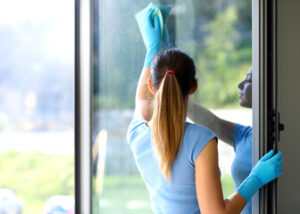Security cameras can be a great way to protect your business from theft and provide evidence if it has been robbed or damaged.
However, the camera system you choose should be secure and able to protect sensitive data. You should make sure that your cameras are on a separate network from other devices and have strong passwords and encryption. Contact Construction Site Security Cameras now!

A security camera is a hardware device that takes pictures or records video indoors or outdoors, and is used to protect people and property. It can also deter criminal acts by scaring off potential thieves or vandals. It can record and transmit images over a network to a monitor or mobile phone, and can be controlled remotely. Security cameras can be used to monitor businesses, homes, schools, airports, streets, and parking lots. They can also be used to monitor children and pets. They can be either wired or wireless and come in different shapes, sizes, and features.
A good security camera should have a wide field of view. Choose a camera that has a maximum viewing angle of 130 degrees so that you can see the left, right, and straight ahead. You should also look for a camera with night vision. This is especially important if you live in an area with high crime rates, as it will deter criminals from entering your home or business.
There are many types of security cameras available, from simple box cameras to sophisticated systems that a control center can manage. Some models have a pan-tilt-zoom (PTZ) feature that allows you to zoom in on certain areas, while others are designed with a fixed lens for general use. The quality of the picture is also important, and you should make sure that the camera has a high resolution and is easy to operate.
Some security cameras record 24 hours a day, but others are designed to only record when they detect motion. This can help reduce storage space and power consumption, as well as prevent false alarms. If you’re looking for a security camera that can record in low light, choose one with a powerful infrared sensor or a bright spotlight.
Choosing a security camera can be difficult, but it’s worth the investment for your peace of mind and safety. Be sure to consider the size of your house and any additional security needs before deciding on a camera. Also, make sure that the camera you select is water-resistant and can withstand harsh weather conditions.
Security cameras can be vulnerable to hacking, which could compromise privacy and cause unauthorized surveillance of individuals or property. Fortunately, several preventive measures can help safeguard against these risks. These include implementing robust cybersecurity measures and ensuring that the system is well-maintained.
Keeping the system up-to-date with software and firmware updates is critical to ensure that it is operating securely and efficiently. These updates often address known vulnerabilities that hackers could exploit, so proactively updating the camera is one of the best ways to mitigate these risks. Using strong Wi-Fi encryption and isolating the camera network from other home devices also helps minimize exposure to potential hacking attacks.
Regularly inspecting the cameras and securing all cables is another important way to maintain system integrity and prevent theft or vandalism. For example, pointing a security camera at a bright light like a spotlight or laser pointer can cause temporary streaks or permanent damage to the image sensors. By mounting these cameras up high and avoiding pointing them at direct sunlight, this problem can be avoided.
Some cameras come with built-in speakers and microphones that enable two-way communication with visitors or intruders. This feature is useful for interacting with suspicious people and deterring crime before it occurs. In addition, some smart security cameras can send notifications to homeowners when they detect movement around the house. This can be particularly helpful if packages are left on the front stoop when nobody is home to monitor them.
Many of these cameras offer cloud storage options that make it easier to access recorded footage remotely and avoid the risk of data loss due to theft or other damages. Others are compatible with popular smart home systems, allowing users to connect them to their smartphone or tablet and control them via voice commands. Some models also use artificial intelligence to identify and notify users of specific motion-related events, such as the arrival of a delivery person or the movement of pets.
Ultimately, security camera features depend on the individual needs of the home and its occupants. However, there are some essential factors that every homeowner should consider before deciding which model is right for them.
The ability of security cameras to work in low-light environments is a vital part of their functionality. They need to be able to capture video footage in conditions that would otherwise make it difficult for the human eye to see, so that users can make informed decisions about their safety and the security of their homes or businesses. Fortunately, advances in technology have made this possible. Compared to analog systems that used to rely on pixelated video tapes, today’s IP based cameras record a high-quality HD1080 image with crisp details that can be used by law enforcement and other authorized parties. They also offer a wide field of view that allows you to monitor a larger area with one camera that would have required multiple analog cameras in the past.
The quality of a surveillance camera’s night vision capabilities depends on the size of its sensor and its sensitivity. Larger sensors allow a camera to gather more light, which in turn leads to a brighter image and better overall performance. In addition, the sensitivity of a camera determines how well it can function in dark conditions. Some cameras use a device called an IR illuminator, which emits infrared light to illuminate objects or surfaces in a darkness-prone environment. The camera then collects ambient light reflected off of these illuminated surfaces to create a clear and detailed image in dark environments.
Security cameras that can operate in a low-light environment are an excellent choice for home security systems and business security, but they may not be suitable for all situations. For example, if your home or office doesn’t have Wi-Fi, you will need to purchase a wired system that connects to the camera using HDMI or network cables. A wired connection is the best option because it reduces the chance of data loss. If you do choose to use a wireless camera, ensure it uses a static IP address. Otherwise, the device’s IP address will change from time to time and you won’t be able to access the camera.
Security cameras are available as standalone devices or as part of a full-blown security system from companies like Vivint, Frontpoint, and ADT. They can be connected to smart home products and voice assistants, making them an integral component of a smart home system. They can also be used to remotely control other security and home automation devices, such as locks and lights. They can also be paired with security alarms to notify you when an intruder enters your home.
The ability to work in high-noise environments is a very important feature for a security camera. The reason is that, if a security camera cannot work in a noisy environment, it will not be able to record anything. This is especially important for business owners, as they need to ensure that their employees are safe and can do their jobs effectively. Security cameras can also help deter criminal acts. If a criminal sees a security camera in the area, they will think twice about breaking into your property and committing a crime.
Security cameras are an effective tool for preventing crime in retail stores, office areas, and other commercial buildings. They can be used to monitor customer traffic and employee behavior, as well as protect inventory and other onsite equipment. They can also help prevent vandalism and other forms of property damage.
There are many types of security cameras available on the market, including IP and networked models. The majority of these devices are Wi-Fi-connected, but a wired connection is also possible. Some are compatible with voice assistants, such as Amazon Alexa or Google Assistant, which can control the device through a smartphone app. Others are compatible with smart home devices, such as thermostats or light bulbs.
If you are looking for a surveillance camera for your home, it is important to consider the size of the room where you want to install it. A larger space may require multiple cameras to cover the entire area. In addition, you should look at the lens size and resolution of the camera to determine whether it is suitable for your home.
There are some disadvantages to using security cameras, however. For one, they can be a privacy hazard if not properly installed and maintained. In some cases, they can also be accessed by hackers. For instance, a journalist discovered a website in 2014 that indexed over 73,000 unsecured IP cameras around the world. It is therefore important to use unique login credentials for your cameras. You should also use a dual-band router to avoid connectivity problems.








